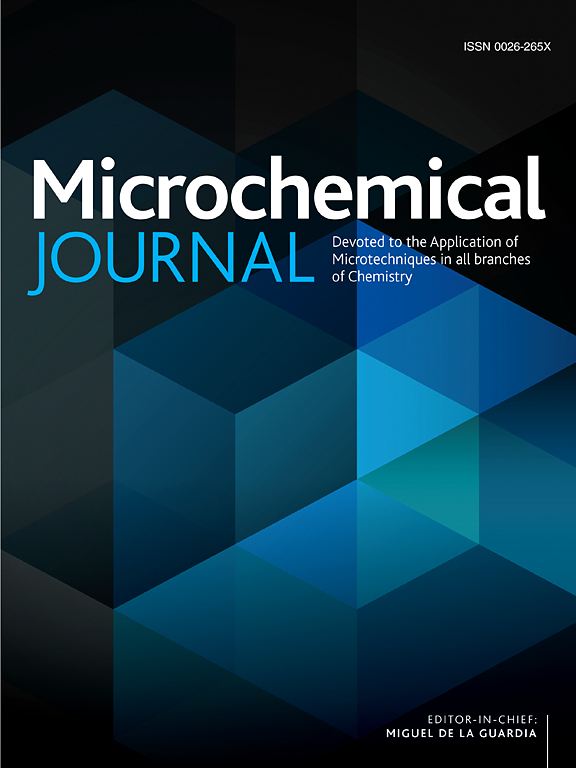A fluorescent probe for selective detection of Pd2+ combined with fluorescent composite membranes and bioimaging
IF 4.9
2区 化学
Q1 CHEMISTRY, ANALYTICAL
引用次数: 0
Abstract
Palladium, as a transition metal of the platinum group elements, plays an indispensable role in chemical, pharmaceutical, and industrial production. However, its potential toxicity can pose risks to our health and the environment. In this work, a novel parallel alkyne-amine naphthalene ring fluorescent probe LNA based on Pd2+ coordination has been developed. The basic structure and detection mechanism of the probe have been confirmed by nuclear magnetic resonance (NMR), Fourier transform infrared spectroscopy (FTIR), and liquid chromatography-mass spectrometry (LC-MS). The probe LNA has a fluorescence-off response to the Pd2+ with high sensitivity (as fast as 60 s) and excellent selectivity (with a detection limit as low as 0.12 μM). Due to the outstanding fluorescence properties of LNA and the low cytotoxicity of its ligand complexes, it has been successfully applied to carboxymethyl cellulose-based fluorescent composite membranes as well as Pd2+ imaging of living cells.

求助全文
约1分钟内获得全文
求助全文
来源期刊

Microchemical Journal
化学-分析化学
CiteScore
8.70
自引率
8.30%
发文量
1131
审稿时长
1.9 months
期刊介绍:
The Microchemical Journal is a peer reviewed journal devoted to all aspects and phases of analytical chemistry and chemical analysis. The Microchemical Journal publishes articles which are at the forefront of modern analytical chemistry and cover innovations in the techniques to the finest possible limits. This includes fundamental aspects, instrumentation, new developments, innovative and novel methods and applications including environmental and clinical field.
Traditional classical analytical methods such as spectrophotometry and titrimetry as well as established instrumentation methods such as flame and graphite furnace atomic absorption spectrometry, gas chromatography, and modified glassy or carbon electrode electrochemical methods will be considered, provided they show significant improvements and novelty compared to the established methods.
 求助内容:
求助内容: 应助结果提醒方式:
应助结果提醒方式:


